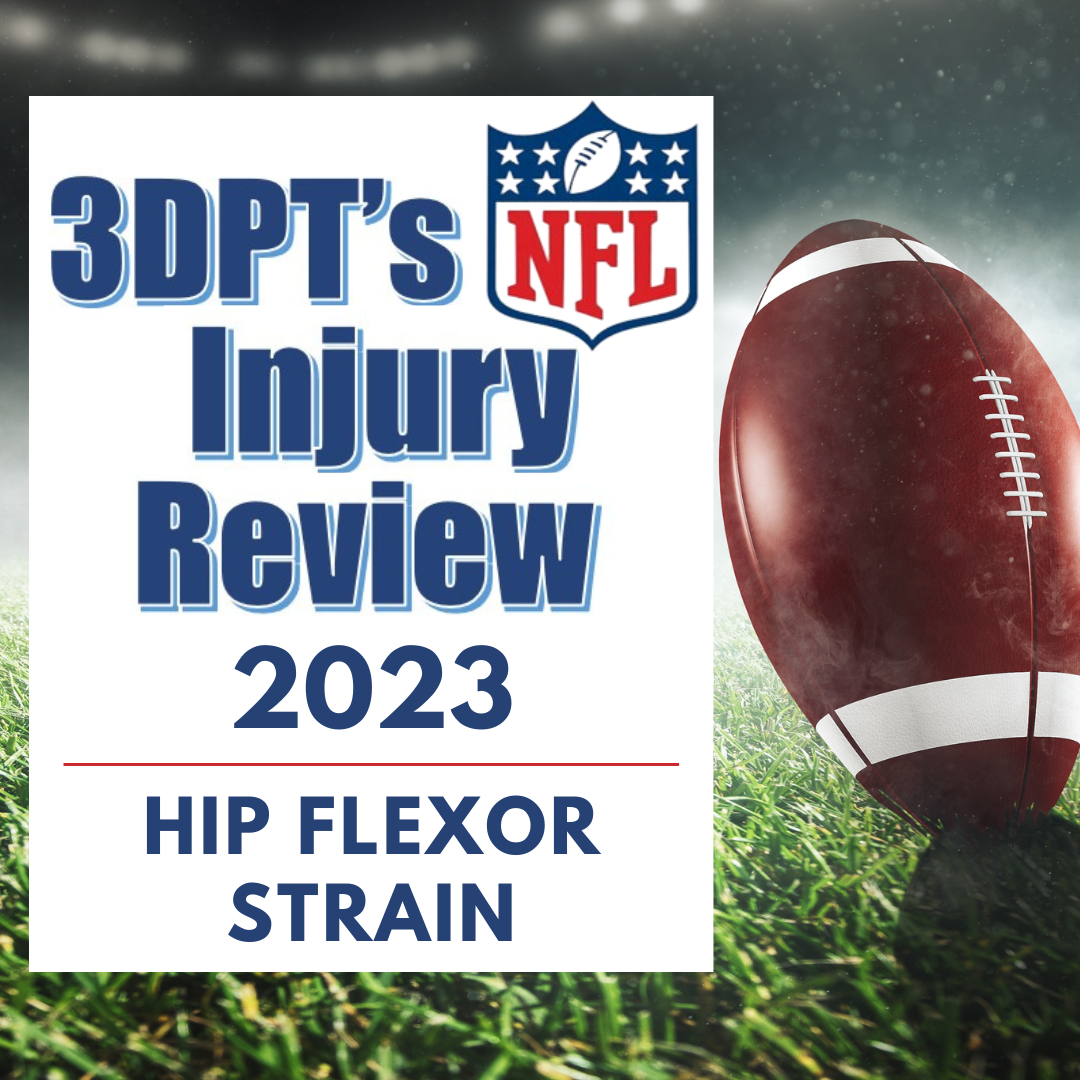
Hip flexor strains are a common issue that can affect individuals of all activity levels, from sedentary individuals to elite athletes. In week 4 of the 2023 NFL season, Broncos running back Javonte Williams suffered a hip flexor strain in a 31-28 win over the Bears. He isn’t expected to miss much time, but let’s talk about how we would address an injury like this in Physical Therapy!
Exercises early on would consist of isometrics in a shortened position for the muscle since strains typically involve excess lengthening of the muscle. These isometrics build back strength and help reduce pain
As time goes on stretching can be introduced and strengthening can be progressed to lengthened positions for the hip flexor. Later in rehab coordination exercises focused on improving motor control of all of the hip muscles will be crucial.
End Stage Rehab will consist of high force/velocity drills challenging the hip flexor as similarly to sport as possible to ensure the athlete is ready to return to play
In the video 3DPT West Berlin’s Dr. Benjamin Harris demonstrates these types of exercises for a hip flexor strain
Prevalence:
Hip flexor strains are relatively prevalent, with various factors contributing to their occurrence:
- Sports and Exercise: Athletes and fitness enthusiasts engaged in activities that involve repetitive hip flexion movements are at a higher risk. This includes sports like football, soccer, running, and dancing.
- Sedentary Lifestyle: On the other end of the spectrum, individuals leading sedentary lifestyles can also experience hip flexor strains. Prolonged sitting and lack of regular stretching can lead to tight hip flexor muscles, making them more susceptible to injury.
- Age: As individuals age, their muscles and tendons may become less flexible and more prone to injury, increasing the likelihood of hip flexor strains.
Symptoms:
Recognizing the symptoms of a hip flexor strain is essential for prompt diagnosis and proper treatment. Here are the typical signs and symptoms:
- Pain: The most common symptom is pain in the front of the hip or the upper thigh. This pain may range from mild to severe and can be sharp or a dull ache.
- Swelling: In some cases, swelling may occur around the injured area.
- Tenderness: The affected hip flexor muscles may become tender to the touch, especially when pressure is applied.
- Weakness: Individuals with a hip flexor strain may experience weakness in the affected leg, making it challenging to lift the knee or perform activities that involve hip flexion.
- Limited Range of Motion: Reduced flexibility and difficulty in moving the hip or lifting the knee are common complaints.
Physiology:
Understanding the physiology behind hip flexor strains can help individuals prevent and manage these injuries:
- Muscle Overuse or Overstretching: Hip flexor strains often occur when the muscles are stretched beyond their normal range of motion or subjected to repetitive stress. This can happen during activities that require sudden bursts of speed or excessive hip flexion.
- Tendon and Muscle Tear: A hip flexor strain typically involves a partial tear or stretching of the muscles or tendons responsible for flexing the hip joint. This tearing leads to pain and inflammation.
- Biomechanics: Poor posture, muscle imbalances, or abnormalities in hip alignment can increase the risk of hip flexor strains. These issues alter the mechanics of the hip joint, putting extra stress on the muscles.
- Inadequate Warm-up: Failing to properly warm up before engaging in strenuous activities can increase the likelihood of hip flexor strains. Cold muscles are less flexible and more susceptible to injury.
Categorized as: 2023 NFL Blog